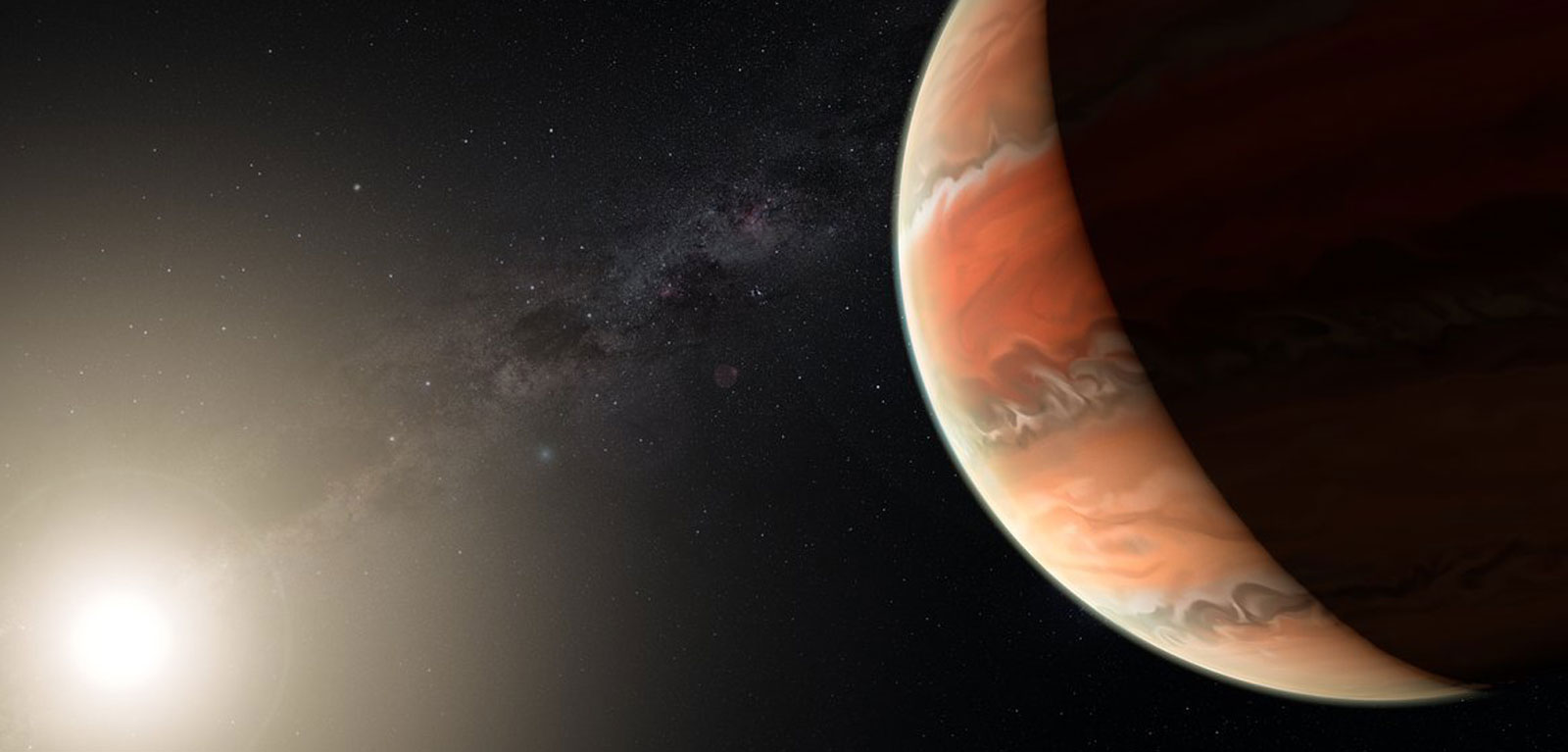Queen’s astronomer and international experts make major exoplanet discovery
An astronomer at Queen’s University Belfast, working with a team of international researchers, has detected titanium oxide in an exoplanet atmosphere for the first time, revealing incredible information about WASP-19b.

Dr Neale Gibson from Queen’s University Belfast teamed up with the European Southern Observatory (ESO) and researchers across the globe to unveil the discovery around the hot-Jupiter planet.
Unique information
Using the power of the ESO’s Very Large Telescope the experts unearthed unique information about the chemical composition, the temperature and pressure structure of the atmosphere of this unusual and very hot world. The results appear today in the journal Nature.
“Detecting such molecules is, however, no simple feat,” explained Elyar Sedaghati, who spent two years as ESO student to work on this project. “Not only do we need data of exceptional quality, but we also need to perform a sophisticated analysis. We used an algorithm that explores many millions of spectra spanning a wide range of chemical compositions, temperatures, and cloud or haze properties in order to draw our conclusions.”
The team have examined the atmosphere of the exoplanet WASP-19b in greater detail than ever before. This remarkable planet has about the same mass as Jupiter, but is so close to its parent star that it completes an orbit in just 19 hours and its atmosphere is estimated to have a temperature of about 2000 degrees Celsius.
Global haze
As WASP-19b passes in front of its parent star, some of the starlight passes through the planet’s atmosphere and leaves subtle fingerprints in the light that eventually reaches Earth. By using the FORS2 instrument on the Very Large Telescope the team was able to carefully analyse this light and deduce that the atmosphere contained small amounts of titanium oxide, water and traces of sodium, alongside a strongly scattering global haze.
Dr Neale Gibson, a researcher at Queen’s University Belfast, commented: “Detections of molecules on exoplanet atmospheres require extremely high precision measurements, and sophisticated algorithms to both extract the exoplanet’s signature and interpret it.
“These results are the culmination of many years of work in improving these techniques, and we are now at the point where we can routinely measure the contents of exoplanet atmospheres and start to understand the physical and chemical processes at play. In the near future, we hope to use these techniques on more Earth-like worlds, and explore the diversity of terrestrial planets in our neighbourhood."
Dr Gibson added: “The presence of titanium oxide is thought to fundamentally change the physics of exoplanet atmospheres. For a long time it has been speculated to be present in the hottest exoplanet atmospheres but only indirect evidence has been found to date. These observations confirm its existence and open the way for exiting new observations of this planet with future facilities.”
Heat absorber
Titanium oxide is rarely seen on Earth. It is known to exist in the atmospheres of cool stars. In the atmospheres of hot planets like WASP-19b, it acts as a heat absorber. If present in large enough quantities, these molecules prevent heat from entering or escaping through the atmosphere, leading to a thermal inversion — the temperature is higher in the upper atmosphere and lower further down, the opposite of the normal situation. Ozone plays a similar role in Earth’s atmosphere, where it causes inversion in the stratosphere.
The astronomers collected observations of WASP-19b over a period of more than one year. By measuring the relative variations in the planet’s radius at different wavelengths of light that passed through the exoplanet’s atmosphere and comparing the observations to atmospheric models, they could extrapolate different properties, such as the chemical content, of the exoplanet’s atmosphere.
Observations
This new information about the presence of metal oxides like titanium oxide and other substances will allow much better modelling of exoplanet atmospheres. Looking to the future, once astronomers are able to observe atmospheres of possibly habitable planets, the improved models will give them a much better idea of how to interpret those observations.
“This important discovery is the outcome of a refurbishment of the FORS2 instrument that was done exactly for this purpose,” added team member Henri Boffin, from ESO, who led the refurbishment project. “Since then, FORS2 has become the best instrument to perform this kind of study from the ground.”
Image credit: Credit: ESO/M. Kornmesser
Media
Media inquiries to Emma Gallagher at Queen’s University Communications Office T; +44 (0)28 9097 5384 E: emma.gallagher@qub.ac.uk